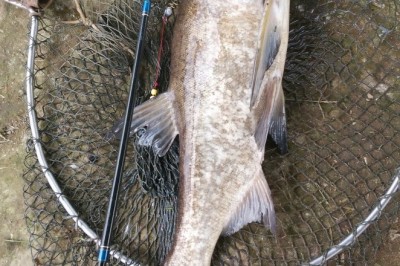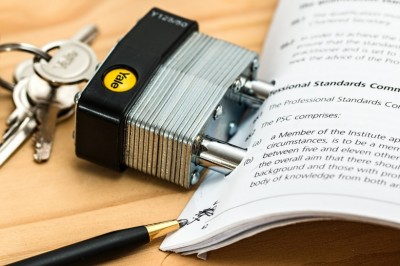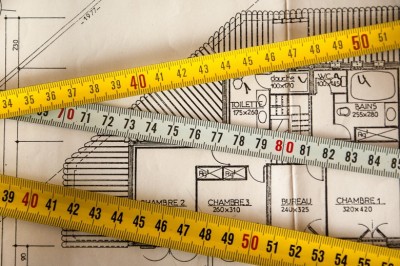Leyland Cypress Staking Methods
Leyland Cypress - Arborvitae Planting -Staking Methods
Select the Proper Tree Stakes
Your choice of tree stakes is partly dependent on what size trees you plant and the variety. I dont think any tree catches the wind like a Leyland Cypress! I know some landscapers feel like it could keep the tree from becoming
strong if you stake them. I have come back 1 week later to look at trees we planted and the homeowner had already let the family gardener remove my stakes so the trees would become stronger! I disagree. A newly planted tree will not be perfectly rooted when the first winter comes, and the weight of ice and snow will probably pull it over 30 degrees or so. If you are not watching and straightening them up,
they will attach roots in that position and you have to really harm the root system to straighten up the tree. Even if you have a Ball and Burlap (B&B) tree with a heavy root ball and you feel there is no way the root ball will shift,
the wind blowing the trunk back and forth will break the trunk loose in the root ball and the tree will die. If it is a Leyland Cypress, it will "wilt" or "droop" within about two weeks, and the damage is done.
Six foot metal fence posts are the best choice for ten or twelve foot Leyland Cypress trees. Leyland Cypress trees are top-heavy, and catch the wind like a sail! I like the metal fence posts called TEE-posts. The average price is $3.39 each. If you dont already have one, purchase a fence post driver wherever you buy your posts. They cost about $16-$19.
Using this tool makes driving the posts easier and could prevent metal chips from striking your face.
Rebar tree stakes are recommended only for very hard ground. I have planted in rocky ground where you couldnt drive a metal fencepost in the ground, but you can always drive 3/8" rebar with a 2 lb hammer. Buy them already cut to 2 lengths
at Lowes or Home depot for 99 cents each. After your trees are all tied, slip a piece of garden hose over the re-bar, and cut the hose off about 4" longer than the rebar. This will prevent injury if someone falls on the tree stake.
Staking with 2" X 2" pointed stakes is recommended for deciduous trees, even if they are ten footers that weighs 500 lbs. These include trees like Sunset Red Maples, October Glory Maples, Dan Fenton Hollies, Nellie Stevens Hollies, River Birch, Crepe Myrtles. These trees are fine with the 5 stakes, especially if the hole is tight like it should be, because these trees dont "catch" the wind like a Leyland
Cypress or Thuja Green Giant will. This size tree stake is also fine for smaller Leyland Cypress and Arborvitae trees, 6 or smaller. A good place to buy is an equipment rental place. The stakes come in bundles of 12 and can be loaded on your truck with a forklift. They can also be found at Home Depot or Lowes.
Positioning tree stakes - Leyland Cypress and Arborvitae are usually planted in a straight row or a zigzag pattern. For a straight row, drive your stakes in line with the outer perimeter of greenery, and in between the tree trunks. Each
tree will be secured in four directions, tying to two stakes "in front" of the line of trees, and two stakes "in back" of the line. The "end" tree only gets tied three directions in a "Y" formation, because on the end of the row you wont put two stakes, just one which is in line with the tree trunks. Using the above technique, all trees are tied in 4 directions, except the end trees are tied in 3, and it only costs you 2 stakes per the number of trees you planted. Leyland Cypress or Arborvitae need to be staked at least three directions because they are top heavy and catch wind.
Securing the trees and stakes - For large trees eight foot and taller, my favorite tie is called tree tie webbing from a.m.leo item LT500G, 500 roll is around 50$, it is soft green material, and 900 lb test! If you double this material, you can stake 20 trees with this. You can also use aluminum electric fence wire. Push it through an 18" piece of garden hose where it wraps around the trunk. Never secure tree stakes to just a limb; always wrap around the trunk. If it is not convenient for you to pick up electric fence wire or you just dont want to pay for that size roll, you can use rebar wire. It is available at every Lowes or Home Depot near the concrete in small rolls the size of a doughnut for about $4. The disadvantage of rebar wire is it will rust and sometimes is rusty when you buy it. For smaller trees, 6 and under, use any type of nylon rope. I use something called pro-series 550/2t tying twine, made by CWC and available at A.M. Leo. It will disintegrate out in the weather after about 1 season which is as long as you need smaller trees to be staked. I leave the stakes and ties in the ground for 1 full year, and for large trees 16 and taller maybe 2 years. If you do leave the ties in place for a second year, check and see if they need to be lossened slightly due to the tree growing some during year 1. For large trees, 18 and taller, reach as high as you can and secure the tree tie webbing around the truck, then secure to the BASE of the stake directly in front of the NEXT TREE OVER, so that the line is at 45 degree angele. If a tie is made 7 or 8 high on a tree trunk, then tied to a stake directly under that tree, there is no strength, the stake will actually pull out because of direct upward pressure.
Use and distribution of this article is subject to our
Publisher Guidelines whereby the original authors
information and copyright must be included.
--
David Watterson operates Watterson Tree
farm in NC with his 4 sons and has planted from Georgia to Long Island since 1998. Tree
Planting Instructions
Planting trees on a hill

























